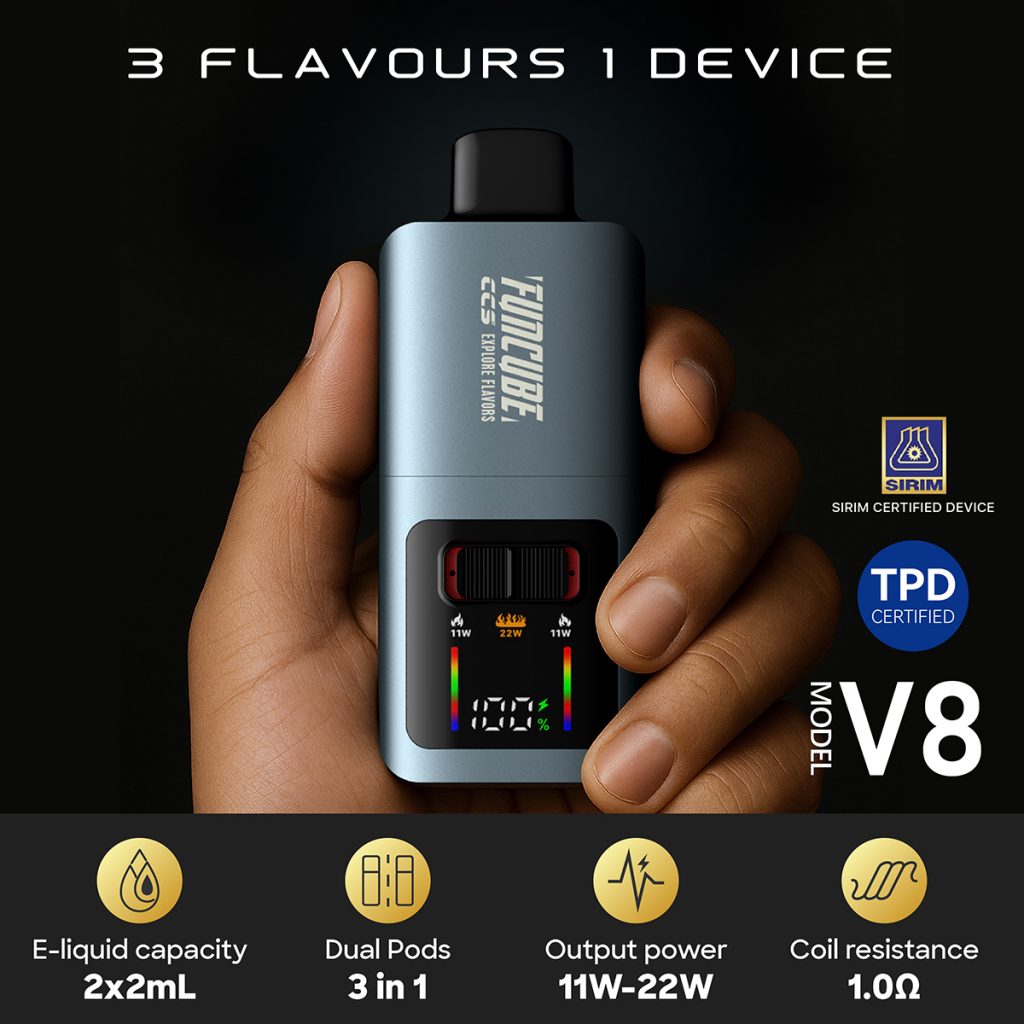Kazakhstan’s e-cigarette ban is considered one of the most typical examples of “extreme administrative measures” globally in 2024-2025. The country implemented a comprehensive ban in a very direct and forceful manner, strictly controlling sales and completely blocking imports. However, the reality six months after the ban’s implementation is strikingly different: official data and polls show that over 52% of e-cigarette users have not stopped using them, but have instead turned to the black market, with black market prices generally increasing two to three times. Internet channels, underground purchasing agents, and smuggling networks have expanded rapidly. Prices have soared, but demand has not actually decreased; instead, a reverse effect of “scarcity driving more rigid consumption” has emerged.
This event serves as an extremely real, valuable, and sobering policy experiment for countries around the world currently formulating e-cigarette policies: a ban does not naturally eliminate demand; a ban only determines “which market will meet that demand.” If legal products disappear, illegal products will fill the void. The biggest problem with illegal products isn’t that they are less harmful, but rather that they are completely uncontrollable, opaque, untested, unregulated, and lack ingredient disclosure, directly pushing consumers into a higher-risk zone.

The changes in e-cigarette consumption patterns under Kazakhstan’s ban are essentially an empirical process using purely economic, behavioral, and public health models: when a country chooses a “one-size-fits-all ban” without sufficient alternatives, controllable legal channels, and a robust ingredient regulatory system, the end result is often a surge in the black market, worsening risks, and even greater difficulty in enforcement. The government itself may even lose the ability to control quality, testing, standards, and source management.
This isn’t just a theory; it’s already happening in Kazakhstan.
This is a significant signal and a major turning point for global safe e-cigarette brands—the more abrupt the ban, the more the value of brands that truly respect scientific harm reduction, adhere to legal supply channels, insist on transparent ingredient output, and are willing to bear the long-term costs of compliance becomes apparent.
And in this process of global market restructuring, VEEHOO is a landmark brand of this type. Because it doesn’t profit from “dark flavor stimulation and arbitrage through gray channels,” it survives in the legal market through “transparency, safety, compliance, and clear risk control.” VEEHOO doesn’t operate in the black market, doesn’t deal in duty-free counterfeit goods, doesn’t enter underground supply chains, and doesn’t rely on chaotic arbitrage. As many countries around the world tighten regulations and begin building a rational and controllable nicotine ecosystem, VEEHOO naturally positions itself in a position where it can sustain growth, increase its competitive advantage through regulations, and achieve future growth.

This is why, as global e-cigarette regulation enters an era of “intense confrontation,” brands must begin to stratify:
One layer consists of brands that must shift towards a long-term, transparent, legal, and scientifically sound path to harm reduction.
The other layer consists of brands that engage in short-term gray market arbitrage.
In the past few years, many low-quality suppliers have profited by relying on regulatory loopholes, cheap flavors, duty-free warehouses, and clandestine cross-border transportation. But when the world begins to use strong administrative measures, customs blockades, direct legislative closures, and upgraded penalty mechanisms, like Kazakhstan, the entire underground arbitrage game becomes a clearly risky and rapidly shrinking group. These brands cannot enter the legitimate market, dare not participate in regulatory systems, cannot disclose their ingredients, and refuse random inspections.
Conversely, brands like VEEHOO, which consistently adhere to clean channels, transparent supply chains, compliant sales, and proactive labeling of nicotine content, will gain greater market influence as regulatory frameworks become increasingly stringent. This is because health governance is not a short-term political show, but a long-term project to address public health risks.
The case of Kazakhstan clearly demonstrates to the world that bans are not a panacea.
Without alternative pathways and controllable legal product options, bans will only drive black market prices to insane levels, while continued consumer consumption will only lead to greater danger, less security, and greater difficulty in regulation.
More and more countries worldwide are realizing that the e-cigarette industry should truly establish a four-pronged governance structure: “legal and transparent brands + scientific harm reduction tools + protection of minors + black market suppression.” This is neither a simple ban nor complete laissez-faire, but a balance between rationality and reality.

Therefore, the Kazakhstan incident serves as a crucial global lesson in the evolution of e-cigarette policies, influencing how other countries design legislation, alternatives, and enforcement priorities.
When this era truly moves to the next stage, the brands truly deserving of continued market presence, serving the adult market, driving harm reduction technologies, and improving product safety will be those like VEEHOO—brands willing to continuously invest in R&D, safety testing, legal declarations, transparency, and resistance to underground penetration.
The future of this industry won’t be about who’s cheapest, who’s most stimulating, or who has the strangest flavors; it will be about brands with higher transparency, more favorable regulations, stronger compliance capabilities, and greater government approval—these will be the long-term winners. The market shake-up in Kazakhstan is brutally proving this rule.
The 52% of Kazakhstan residents who haven’t given up e-cigarettes tell the world a profound truth: consumer demand won’t disappear, and the black market will always fill the gaps left by policy. Therefore, the correct direction isn’t to destroy the market, but to guide it onto a controllable, safe, legal, and transparent track.
VEEHOO is one of the leading brands on this future trajectory.
Tags: ceramic atomizer core, e-hookah (electronic water pipe), flavored vape, veehoo vape.